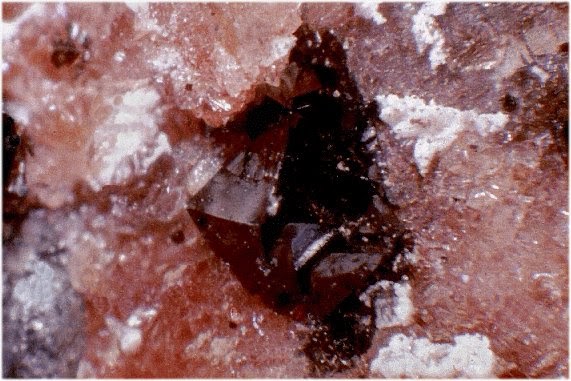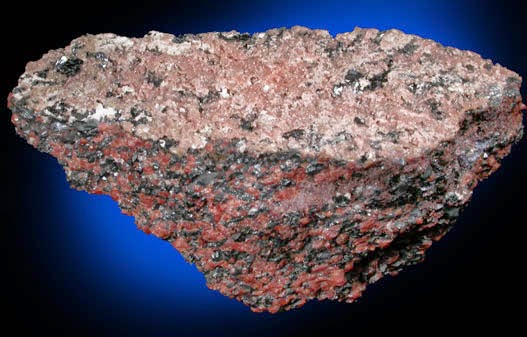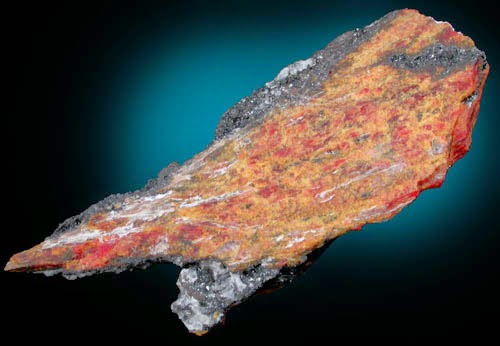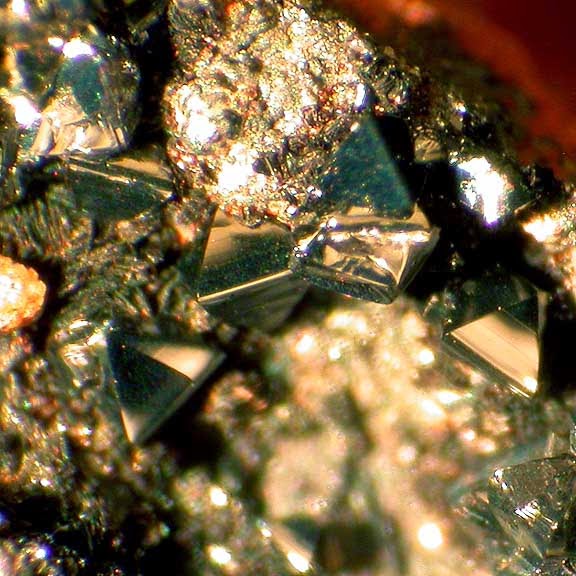
Locality: Franklin, Sussex County, New Jersey, USA.
Name Origin: From the Greek for “companian”, for its occasional association with chalcophanite.
They as well as Ramdohr and Frenzel (1956) before them, expressed the opinion that hetaerolite – as a product of weathering of Mn-bearing zinc ores – is much more abundant than previously thought. Now hetaerolite has also been found in the Pb-Zn-deposit at Rodna, Rumania, probably the first locality in Europe. The Rodna deposit belongs to the neogene metallogenetic province of the Carpathian Mountains (Giusca, Cioflica, and Udubasa, 1969) and consists of metasomatic ore-bodies in metasomatic limestones and of injections in andesitic explosion-breccias.
The ores consist predominantly of pyrite, sphalerite, pyrrhotite, and galena (Udubasa, 1970). The hetaerolite discussed here was found in cavities within the crystalline limestones where it occurs in a matrix of limonitic ochre together with broken-off fragments of galena crystals, which have been partially coated by cerussite.
Physical Properties
Cleavage: {001} Indistinct, {112} Poor, {011} Poor
Color: Black.
Density: 4.85 – 5.18, Average = 5.01
Diaphaneity: Subtranslucent to opaque
Fracture: Brittle – Uneven – Very brittle fracture producing uneven fragments.
Hardness: 6 – Orthoclase
Luminescence: Non-fluorescent.
Luster: Sub Metallic
Magnetism: Nonmagnetic
Streak: brownish black
Photos :













